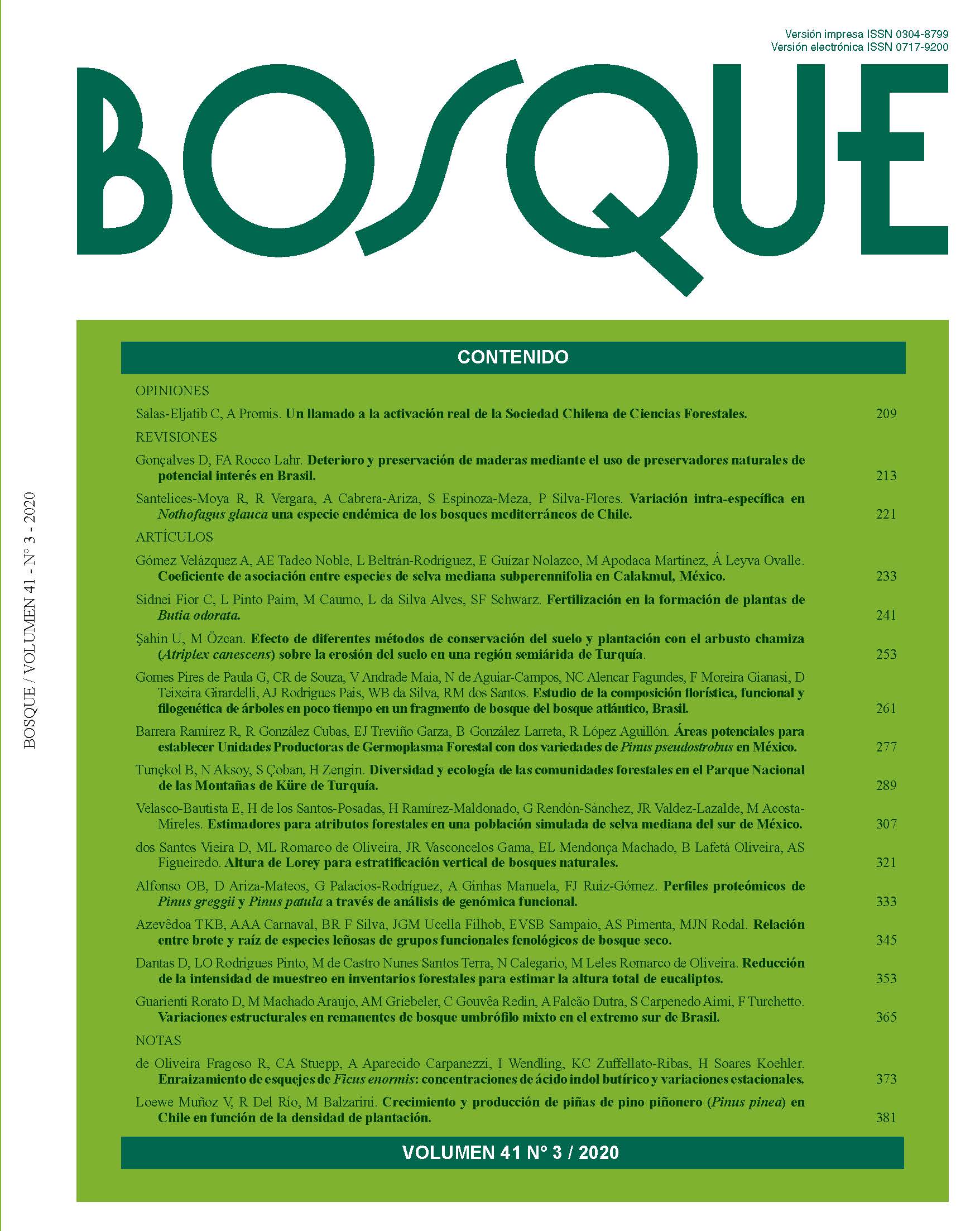Main Article Content
Nov 30, 2020
Abstract
The study aimed at characterizing the arboreal-shrubby component in fragments of Mixed Ombrophilous Forest, in Rio Grande do Sul State, Brazil. The vegetation survey was performed in four sampled fragments in 57 plots. In the plots, the identification of the individuals and measurement of circumference at breast height (CAP) was carried out, according to the following classes of size: Class I) arboreal strata, individuals with CAP ≥ 30 cm (10 x 20 m); Class II) arboreal strata, individuals with 15 ≤ CAP < 30 cm (10 x 10 m); Class III) established natural regeneration, individuals with 3 ≤ CAP < 15 cm (5 x 5 m) and Class IV) bank of seedlings, individuals with height ≥ 30 cm and CAP < 3 cm (2 x 2 m). The data of Class I constituted a matrix parcel x species, which was used in a multivariate analysis, allowing the classification of groups of plots that characterize microhabitats. The forest fragments presented low floristic richness of typical species of Mixed Ombrophilous Forest. From this environment highlight two main groups, one characteristic of riparian forest and the other from capões. In the riparian forests (GR1), highlighted Eugenia uruguayensis and Gymnanthes klotzschiana. In capões (GR2), the predominant species were Araucaria angustifolia, Podocarpus lambertii and Myrceugenia cucullata. The condition of species in different classes associated with their ecological characteristics allows identifying possible strategies for perpetuation of the arboreal-shrubby component of population and management of the fragments aiming at its conservation.


